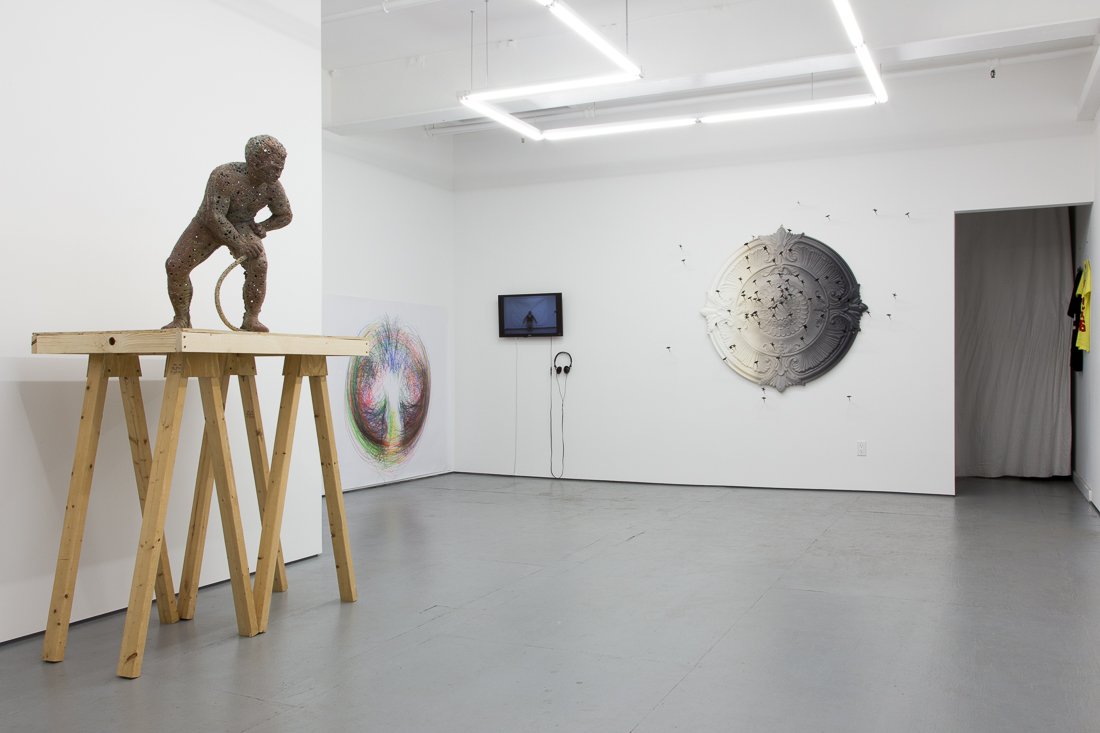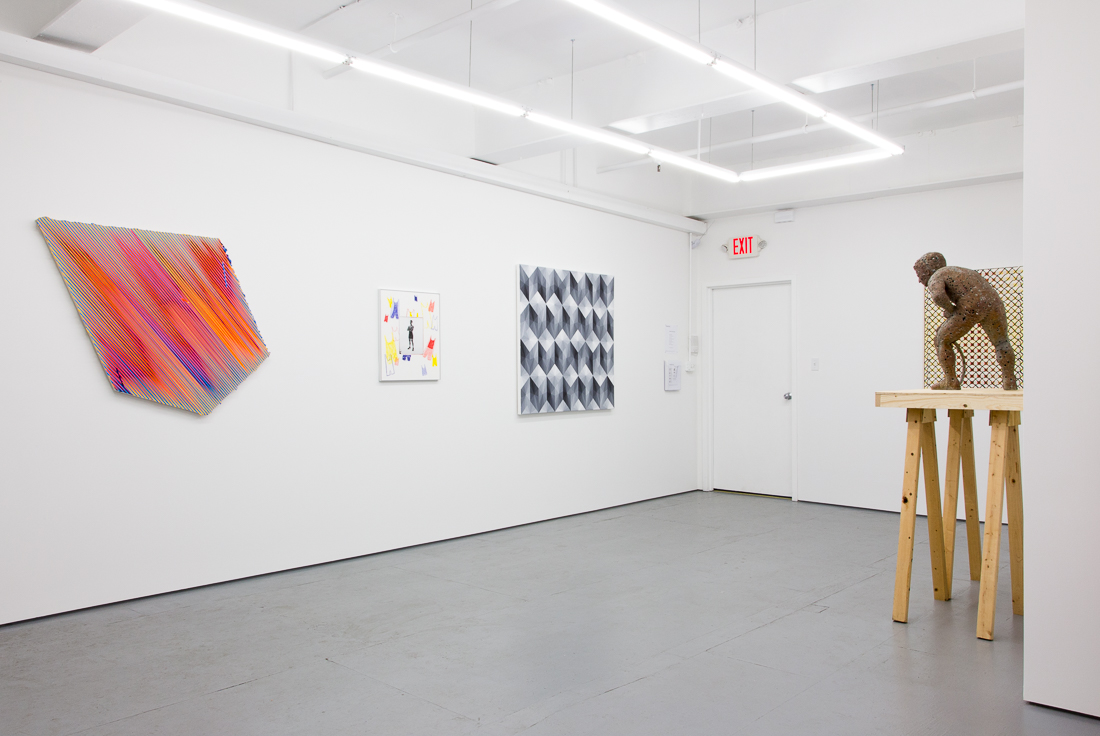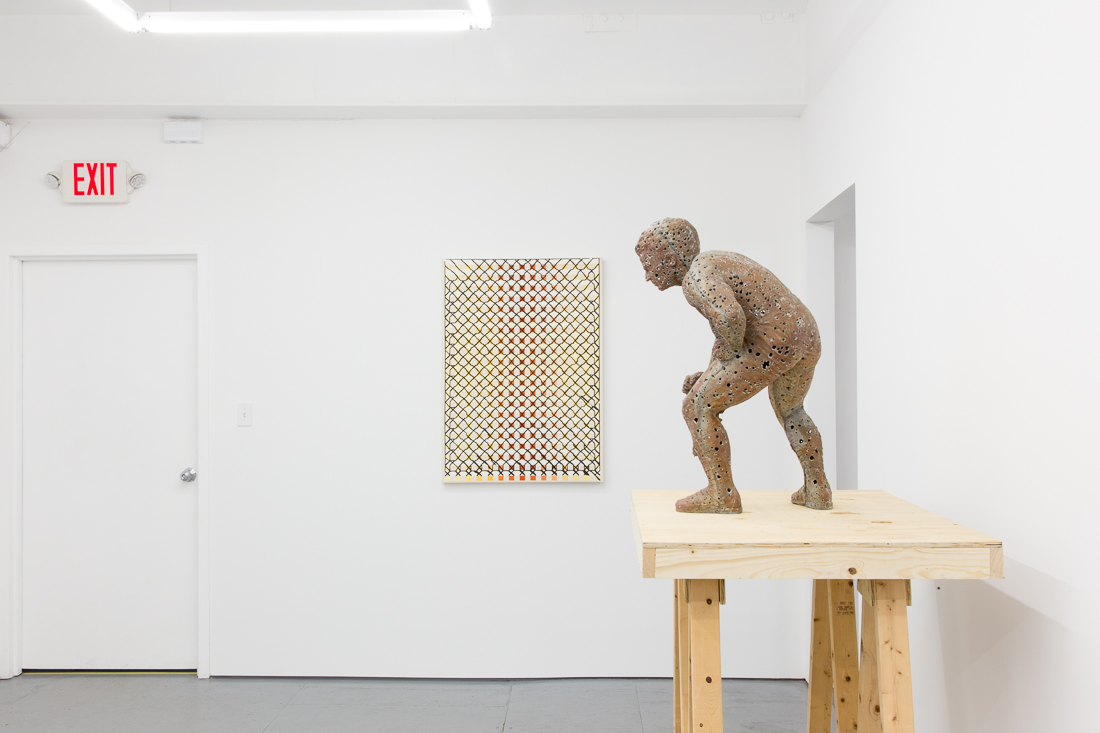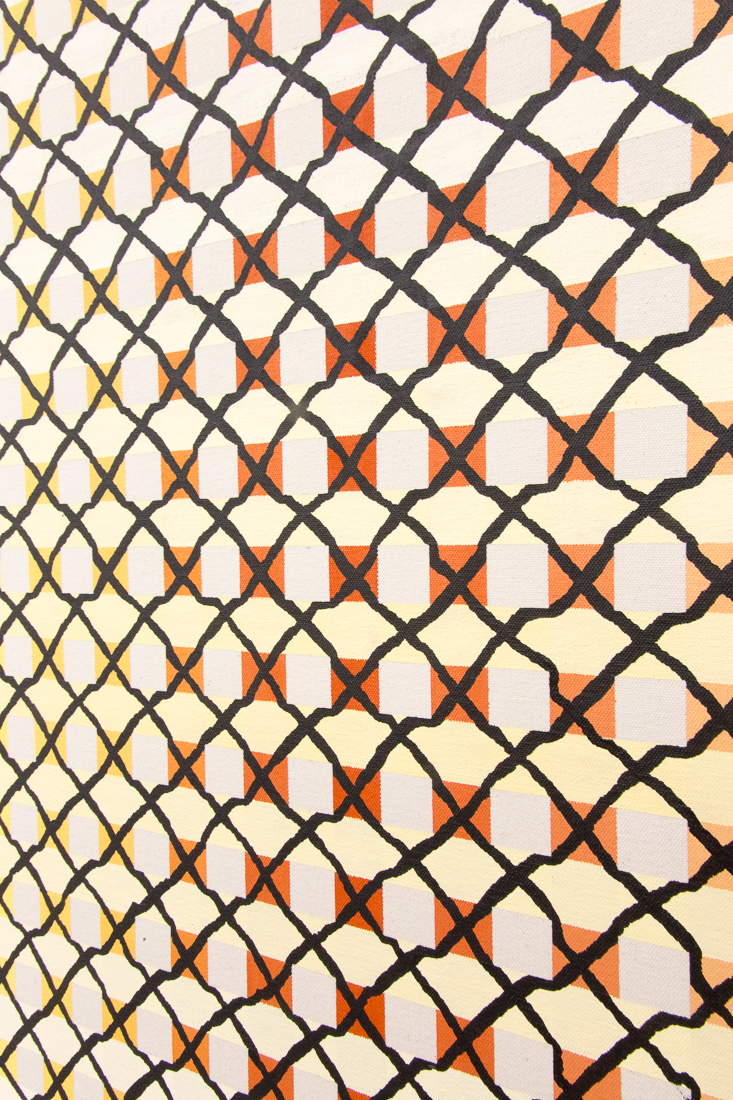Rules of the Game
PALMA BLANK • AMANDA BROWDER • PAUL CORIO • JEAN ALEXANDER FRATER • BEN MCNUTT • MICHAEL NAMKUNG • NORM PARIS • DERRICK VELASQUEZ
July 8 – August 7, 2016
Opening Reception: July 8, 6–9pm
”Quality without results is pointless. Results without quality is boring.” — Johan Cruyff
The primary difference between sport and art is the existence of agreed-upon rules. Art has etiquette, a context something like a set of rules, but as a set of discourses essentially rooted in exceptionality, the making of art in general is fairly anarchic. Rather, every artist’s practice proposes, self-consciously or not, a set of rules, a new game they're playing, and part of our job as viewer is, much like a viewer of an unfamiliar sport, to figure out what those rules are. This is the game where we don't touch the ball with our hands. This is the game where we have to bounce the ball if we're moving. This is the game where we punch each other until one of us can't stand. Art is the game where we make up rules and try to explain them until we can’t stand either.
Much like athletes, artists are constrained, whether by their own design or by the physical demands of making objects, in ways that govern their practice. In this exhibition, we consider artists whose works embody or thematically engage with systems of rules which, as in sport, provide frameworks in which meaning takes shape.
Palma Blank’s process of painting is strictly organized, utilizing only four colors per piece, methodically applied in layered, thin lines. However, her combination of these colors and creation of distorted, angular spaces creates a wide array of colors, which change as the viewer moves around the work. Often partially fluorescent, her color palettes are reminiscent of team logos, and her shaped canvases at times echo sports symbols.
Amanda Browder produces large scale fabric installations for building exteriors and public spaces. By subverting the idea of the artist working alone in his/her studio, while instead amassing a team of local volunteers and suitable locations for production, she enables herself to work in an outsized scale, on par with group effort. The large repeated bands of colors that are indicative to her method work to physically hide the buildings she covers, while optically drawing attention to it, as if to transform real space into a vibration of color.
Paul Corio's geometric hard edge abstract paintings are based on color systems of his own devising, at times derived from such personal interests as Jazz music or horse racing results. Oscillating between system based and improvisational approaches he creates a playful arena ofinfinite possibility, with geometry used as a framework to allow color to take a leading role.
Jean Alexander Frater collaborates and experiments with the materials of painting; shifting thedistinct roles of paint, raw canvas, and rectilinear support and using those materials as both thecontrols and the variables of the process. “Gravity propels the black paint down the canvas, and the painted surface directs or changes the quality of the black line.”
Ben McNutt’s wrestling photographs take on the confines of male identity with the cool, exacting touch of an anthropologist, a step removed from the knowing glances of his subject matter. Wrestling is, at its core, a codified, formalist version of the violence that underlies male culture, and McNutt’s photographs of wrestling highlight the complex physicality of that violence with a clarity that is more than mere visual metaphor.
In order to create the body of work that includes 21 Wall Sits, Michael Namkung studied as an athletic trainer so he could train others to produce the drawings. Participants were instructed as follows: Sit against the wall with your legs forming a 90-degree angle; sit up straight and face forward; you will feel a burning sensation in your quadriceps that will gradually increase in intensity; draw until your body tells you to stop.
In Norm Paris’s work, labor intensive processes—hand-modeling, casting, and even the crating of art works to protect them—are used to explore his relationship to popular culture of the past as a kind of relic. These works manifest the ephemerality of public glory through further processes ofdisintegration and destruction, rendering figures that are simultaneously heroic and entropic.
Derrick Velasquez investigates both the psychological and physical qualities of manufactured materials. Demands placed on materials, whether they occur naturally, as with the cumulative force of gravity on an object at rest, or are deliberately brought to bear, as when we bend something to see when it will break, both reveal and obscure their inherent qualities and thepurposes for which they were intended. Through an engagement with these material properties, Velasquez addresses the tension between the physical conditions of these materials and our psychological response to them.
































